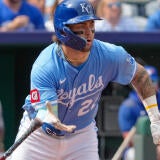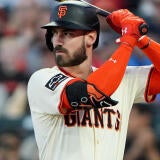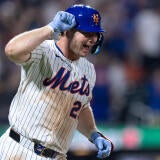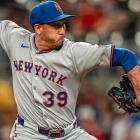Fantasy baseball waiver wire: Zebby Matthews' strikeout-walk ratio makes him a viable late-season option
Fantasy managers should consider adding Bryan Abreu in any league where saves count
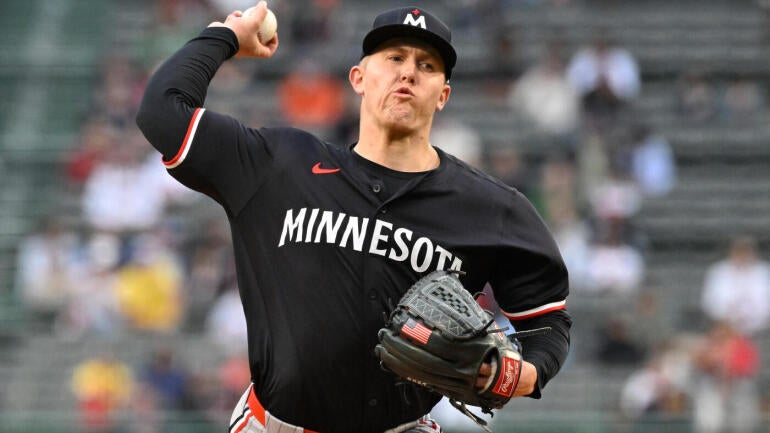
One of the great innovations of the early sabermetrics era in baseball was the realization that, ultimately, pitching is very simple to figure out. You just need to know how many strikeouts a pitcher gets, how many walks they give up, and how many home runs they allow, and you'll know how good a pitcher is. That was the conceit behind the development of defense-independent pitching metrics, and specifically, around FIP, which uses just those three inputs.
FIP is, of course, a gross oversimplification for about a thousand reasons. But, for all the time we spend talking about individual pitch characteristics, whiff rates, and everything else these days, it's remarkable that FIP remains a pretty good predictor of what a pitcher will perform in the future. Not the best predictor, but a pretty good one. Much better than ERA, at least.
The big limitation, of course, is that FIP assumes pitchers have effectively no control over what happens when batters make contact with their pitches. We know that's not true, of course – pitchers do have control over the quality of contact they allow. But one thing FIP got right all along was that what happens when hitters make contact is a whole lot noisier than how many strikeouts or walks a pitcher can account for. With a few years of data, we can confidently conclude that, say, Nick Pivetta's inability to keep the yard is no fluke; we can also look at Paul Skenes' ability to consistently generate weak contact over his first two seasons and assume there's a real skill there. It's just that the quality of contact stats for pitchers take more time than most Fantasy players (and even us analysts, sometimes) are willing to allow to stabilize.
Which is to say, when a pitcher comes out of the gate with unusually strong strikeout and walk rates and unusually poor results on balls in play early in their career, that might be a pitcher worth targeting.
Which is to say, Zebby Matthews might just be a pitcher worth targeting. He made just his 18th career start Monday against the Yankees, and he did a lot well. He nearly made it through six innings while striking out nine and walking just one. But he continued to get hit hard, giving up three earned runs on three solo homers to fall just short of the quality start. And it's just been like that for him so far.
Through those 18 starts, Matthews has an unsightly 5.84 ERA. That's bad, and it's only marginally better so far this season at 5.11. And it's not hard to see why: He's given up 18 homers in 81.2 innings, a 1.98 HR/9 mark that only two qualifying pitchers have topped over the past five seasons. That's incredibly bad. It's probably a disqualifying mark, to be honest.
But man, everything else looks so good for Matthews. He's up to a 27.2% strikeout rate and down to a 6.0% walk rate; that 21.2% K-BB% rate would be just behind Joe Ryan for the seventh-best mark in baseball, just ahead of Nathan Eovaldi. That's obviously pretty good company to keep, and you just need to look at Ryan for an example of how betting on strikeouts and walks can be the right call – he gave up 1.8 HR/9 during his mediocre 2023 season, but is down to a much more manageable 1.14 over the past two seasons, with a combined 3.20 ERA as a result.
This is not to say Matthews hasn't earned his poor results. He gives up a lot of hard contact, with a career expected wOBA on contact of .445; for some context, Matt Olson and Bryce Harper are both sitting at a .444 xwOBA on contact.
Turning every hitter into Bryce Harper or Matt Olson is bad, to be clear, and that's basically what Matthews has done so far. And if that's what he's going to do moving forward, yeah, this isn't going to work. But a .445 xwOBA on contact is an unusually poor mark – only Brandon Pfaadt has a worse one this season, and only one other pitcher has a worse one over a full season since 2021.
But that one pitcher was Tarik Skubal back in 2021. Skubal hasn't emerged as some kind of expert quality of contact limiter, or anything, but he's been squarely average this season, and that's been more than good enough, obviously. If Matthews could get to average, he could be a very good MLB pitcher with how many bats he misses.
That may not happen this year. He might need to develop a new pitch, or tweak his current grips, or just find a better mix. He may need to refine his command to avoid the wrong spots of the zone. But if he does figure it out, the upside is pretty clear. And when the only thing you're doing wrong is the one thing we know pitchers have the least control over, it's worth betting on pitchers with that skill set, figuring it out. I think Matthews will.
Here's what else you need to know about from Monday's action around MLB:
Tuesday's top waiver-wire targets
Bryan Abreu, RP, Astros (28%) – This one is almost entirely speculative, but … Josh Hader was unavailable Monday due to left shoulder soreness, and that's pretty scary. Abreu didn't get the save Monday (he recorded five outs Sunday), but he's almost certainly next in line if Hader has to miss time, and he could be a hugely valuable Fantasy option if that does happen, as he has a 2.18 ERA and 34.3% strikeout rate over the past four seasons. He's been one of the best relievers in baseball in that stretch and should be more than capable of serving as the closer if needed. This might be nothing for Hader, but in any league where saves count, you should add Abreu, just in case.
Cristian Javier, SP, Astros (41%) – Javier made his first start since last May on Monday, and he looked pretty good. Not quite as good as his best, but not bad! Most notably, Javier's velocity was up to 93.5, back to where it was in 2022. There was probably some extra adrenaline in his return that boosted that, but we can never just assume a player in his late 20s will come back from Tommy John surgery with their stuff intact, and Javier mostly looked like himself. But a slightly different version of himself, with a couple of new pitches. He threw his changeup about 4 mph harder than he did pre-injury, and he also leaned on a sinker 14% of the time, the first time he's ever been tracked throwing one of those. Javier used to live and die with his four-seamer and slider/sweeper (as it was classified Monday) combo, and it looks like he might have the basic building blocks still there. That doesn't mean he'll ever be a Fantasy standout like he was in that incredible 2022 season (2.54 ERA, 0.95 WHIP, 194 strikeouts in 148.2 innings), but he looked like he belonged in his return to action. Can't ask for too much more than that.
Colson Montgomery, SS, White Sox (62%) – Now that I think about it, "Colson Montgomery" does kind of sound like "Sylvester Coddmeyer." Maybe they're both The Kid Who Only Hit Homers. Montgomery clubbed his 10th in 32 games Monday, and is top-12 in isolated slugging percentage since his promotion, ahead of names like Cal Raleigh, Vladimir Guerrero, and Pete Alonso. The problem is that's kind of all Montgomery is doing right now. I mean, that's not actually a problem – a 50-homer pace is awesome no matter what – but it will become one if and when his homer pace slows. The question is whether Montgomery has enough other skills, or if he can still be a 30-homer kind of threat – and both questions are very much open, given how much better he's been in the majors than the minors so far. That's an important question for the long run, but for now, I think it's okay to just enjoy the ride.


